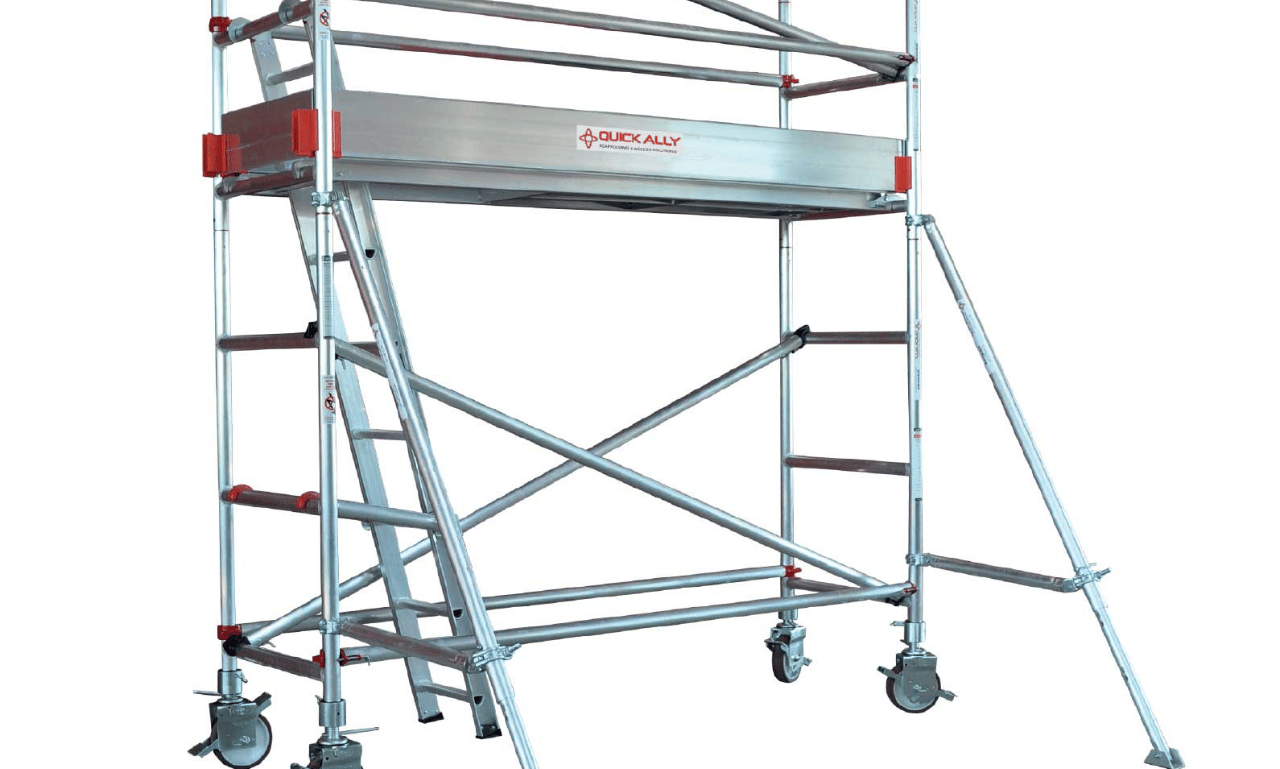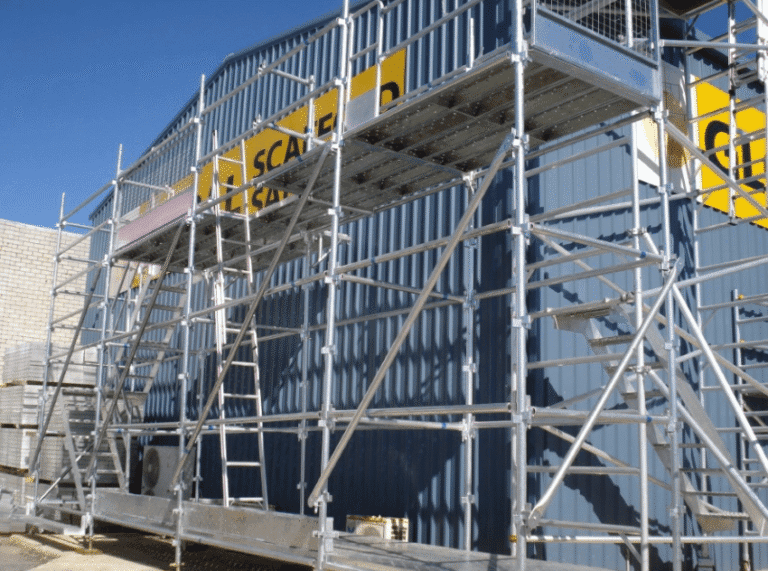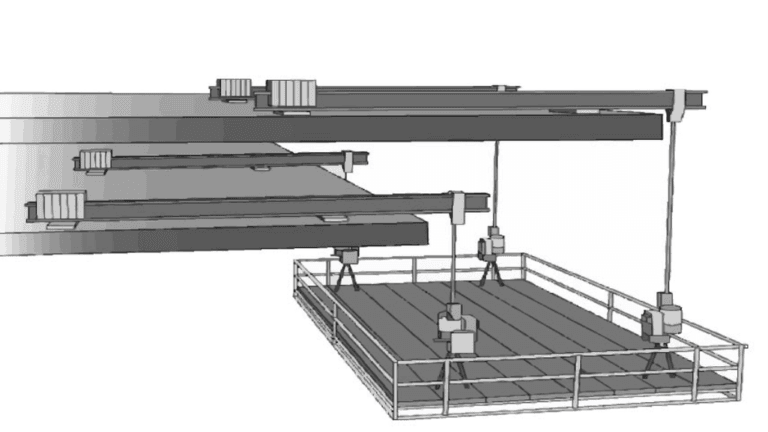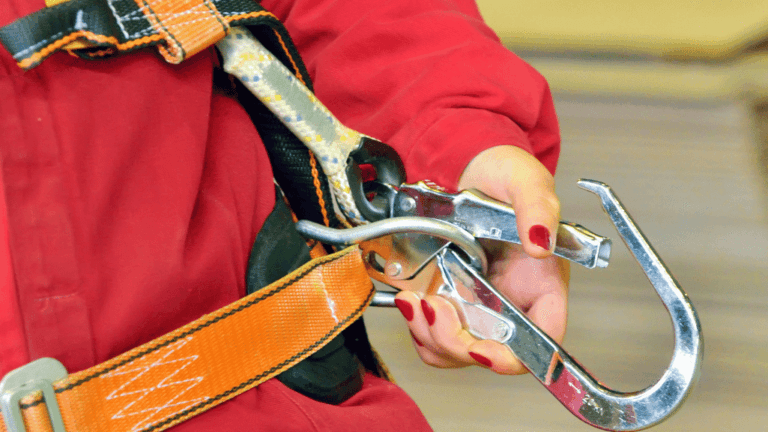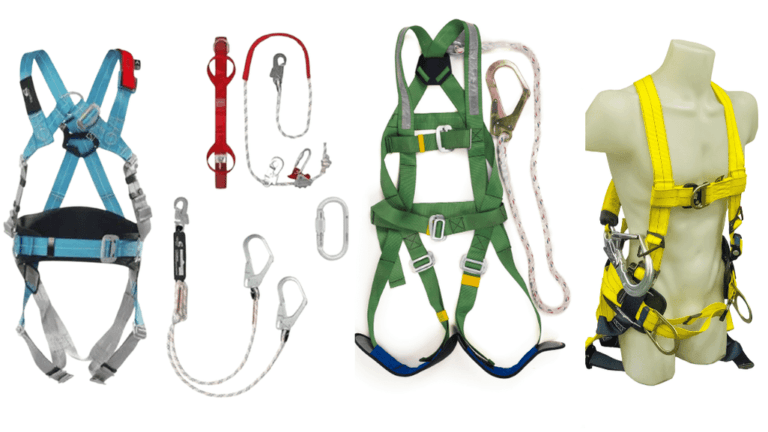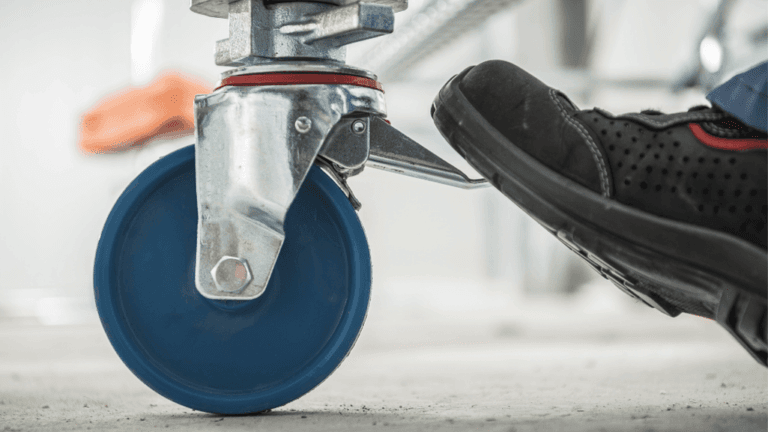Phone:
(+65)8319-0742
Mobile scaffolds play a crucial role in providing safe work access on industrial job sites. These versatile and adjustable scaffolding systems are essential for workers to carry out their tasks efficiently and securely. Whether it’s a construction project or maintenance work, having the right mobile scaffold solution is key to ensuring the safety and productivity of the workforce.
There are various types of mobile scaffolds available to cater to different job requirements. From scaffold rentals to portable scaffolding systems, adjustable scaffolding, rolling scaffolds, and aluminum scaffolds, there is a wide range of options to choose from. Each type offers unique features and benefits, making it crucial to understand their applications and suitability for specific work environments.
When selecting a mobile scaffold system, it’s essential to consider factors such as compliance with safety regulations, specific job site needs, and the quality of scaffolding equipment. Opting for industrial scaffolding that meets industry standards not only ensures worker safety but also enhances overall project efficiency and effectiveness.
In this article, we will explore the benefits of using mobile scaffold systems, the different types available, important considerations when choosing a scaffold, safety protocols, common applications, advancements in mobile scaffold technology, and best practices for setup and use.
Key Takeaways:
- Mobile scaffold solutions provide safe work access on industrial job sites.
- There are various types of mobile scaffolds available, including rentals, portable systems, adjustable scaffolding, rolling scaffolds, and aluminum scaffolds.
- Choosing the right scaffold system requires considering safety regulations, specific job needs, and the quality of scaffolding equipment.
- Adhering to safety protocols, such as regular inspections and proper assembly/disassembly, is crucial for maintaining worker well-being.
- Mobile scaffolds are widely used in construction, maintenance, painting, and other industrial activities.
Understanding the Benefits of Mobile Scaffold Systems
When it comes to efficient and safe work access on industrial job sites, mobile scaffold systems are the go-to solution. These versatile systems offer a range of benefits that enhance productivity and ensure worker safety. Let’s explore the advantages of utilizing mobile scaffold systems:
Flexibility and Versatility
One of the key advantages of mobile scaffold systems is their flexibility. Workers can easily move these scaffolds to different areas of a project, allowing them to access diverse work zones quickly and efficiently. This flexibility saves time and effort that would otherwise be wasted on dismantling and reassembling traditional scaffolding structures.
In addition to their mobility, mobile scaffold systems also offer versatility. They can be adjusted to varying heights, allowing workers to adapt them to different job requirements. This adaptability makes mobile scaffolds suitable for projects of any scale and complexity.
Safety and Stability
Industrial scaffolding plays a critical role in ensuring worker safety, and mobile scaffold systems are no exception. These systems provide a secure and stable work platform, allowing workers to perform their tasks with confidence. With features like guardrails and anti-slip surfaces, mobile scaffolds minimize the risk of falls and accidents, crucial considerations in any industrial setting.
Moreover, mobile scaffold systems are designed to meet strict safety standards set by regulatory bodies. They undergo rigorous testing and adhere to industry guidelines to ensure the highest level of safety for workers.
To better understand the benefits of mobile scaffold systems, here is a visual representation:
| Benefits of Mobile Scaffold Systems |
|---|
As shown in the table above, mobile scaffold systems offer increased flexibility, easy maneuverability, and enhanced safety, making them an ideal choice for industrial scaffolding needs. By leveraging these benefits, businesses can create a safer and more efficient work environment.
Exploring Different Types of Mobile Scaffold Solutions
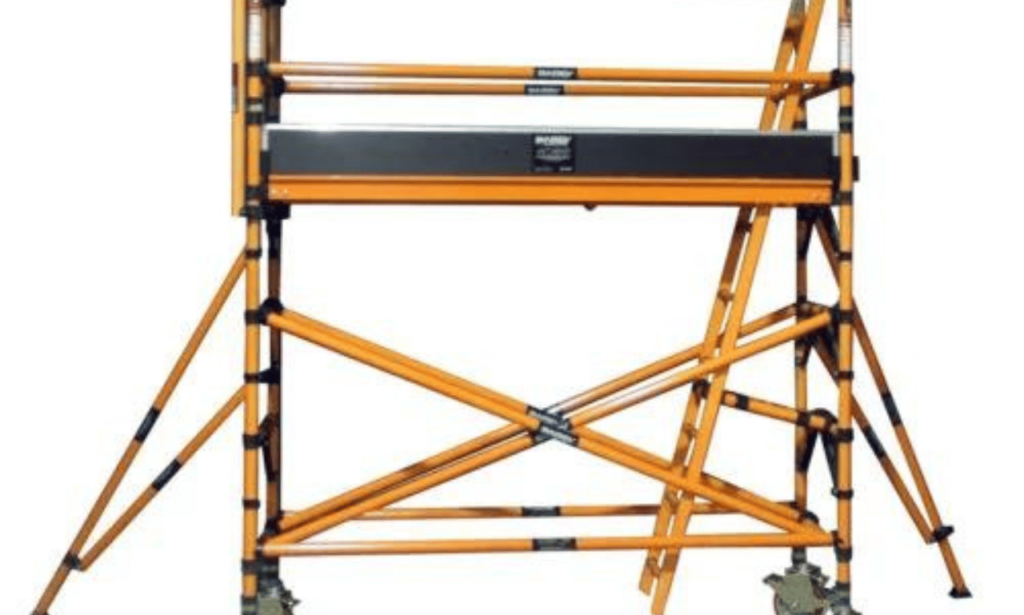
When it comes to mobile scaffold solutions, there is a wide range of options available to suit various work requirements. In this section, we will delve into the features and applications of different types of mobile scaffolds, including portable scaffolding, adjustable scaffolding, rolling scaffolds, and aluminum scaffolds.
Portable Scaffolding
Portable scaffolding offers convenient and flexible access solutions for industrial job sites. Its lightweight and easily movable design allow for quick assembly and disassembly, making it ideal for projects that require frequent repositioning. Portable scaffolding provides stability and safety while offering workers the mobility they need to access different areas of the project. Whether it’s maintenance work, construction, or painting, portable scaffolding proves to be a versatile choice.
Adjustable Scaffolding
Adjustable scaffolding offers versatility and adaptability, allowing workers to easily modify the height and configuration of the scaffold to suit their specific needs. With adjustable features such as telescopic legs or adjustable platforms, these scaffolds are designed to cater to different work requirements and varying site conditions. This type of scaffold is particularly useful in situations where workers need to access hard-to-reach areas or work at various heights.
Rolling Scaffolds
Rolling scaffolds are equipped with wheels that enable easy movement around the job site, making them highly efficient for large-scale projects. These scaffolds offer stability and mobility, allowing workers to maneuver through different work areas with ease. Rolling scaffolds are commonly used in construction, maintenance, and painting projects that require frequent relocation and accessibility.
Aluminum Scaffolds
Aluminum scaffolds are known for their lightweight yet strong construction, making them a popular choice for various industrial applications. The use of aluminum ensures durability and corrosion resistance, while the lightweight design allows for easy assembly and transportation. These scaffolds are suitable for both indoor and outdoor projects, providing a stable platform for workers to perform their tasks efficiently and safely.
By understanding the features and benefits of each type of mobile scaffold, construction and industrial professionals can choose the most suitable solution that aligns with their specific project needs. Table 3.1 summarizes the key features and applications of these different types of mobile scaffold solutions.
| Type of Mobile Scaffold | Key Features | Applications |
|---|---|---|
| Portable Scaffolding | Lightweight and easily movable design | Construction, maintenance, painting |
| Adjustable Scaffolding | Height and configuration adjustability | Hard-to-reach areas, varying site conditions |
| Rolling Scaffolds | Equipped with wheels for easy movement | Large-scale projects, construction, maintenance, painting |
| Aluminum Scaffolds | Lightweight, durable, and corrosion-resistant | Indoor and outdoor projects, construction, industrial applications |
With the knowledge of these different types of mobile scaffold solutions and their applications, professionals can make informed decisions to ensure safe and efficient work access on industrial job sites.
Factors to Consider When Choosing a Mobile Scaffold
When selecting a mobile scaffold, it’s crucial to take several factors into consideration to ensure a safe and efficient work environment. Evaluating scaffold rentals, complying with safety regulations, and meeting the specific needs of the job site are essential steps in making an informed decision. Opting for industrial scaffolding that meets the required industry standards is of utmost importance.
Evaluating Scaffold Rentals
If you’re considering renting a mobile scaffold, it’s essential to assess the reputation and reliability of the rental provider. Look for companies that offer high-quality, well-maintained scaffolds that meet safety standards. Additionally, inquire about their rental terms, including delivery options, rental periods, and any additional fees or charges.
Ensuring Compliance with Safety Regulations
Compliance with safety regulations is paramount when choosing a mobile scaffold. Ensure that the scaffold meets all relevant safety standards and guidelines, such as those set by OSHA (Occupational Safety and Health Administration) or other local regulatory bodies. Prioritize scaffolds that undergo regular inspections and maintenance to ensure optimal safety.
Considering the Specific Needs of the Job Site
Each job site has unique requirements, and it’s crucial to choose a mobile scaffold that suits those needs. Consider factors such as the height and size of the work area, the weight-bearing capacity required, and the nature of the tasks to be performed. This consideration will help ensure that the chosen scaffold is appropriate for the specific job site conditions and can accommodate the workers and equipment effectively.
| Factors to Consider | Importance |
|---|---|
| Evaluating Scaffold Rentals | Ensures quality and reliability |
| Compliance with Safety Regulations | Maintains a safe work environment |
| Considering the Specific Needs of the Job Site | Optimizes scaffold efficiency |
By carefully considering these factors, you can make an informed decision when choosing a mobile scaffold for your industrial job site. Remember, prioritizing safety, reliability, and meeting the specific needs of your work environment is essential for a successful and productive project.
Ensuring Safety with Mobile Scaffolds
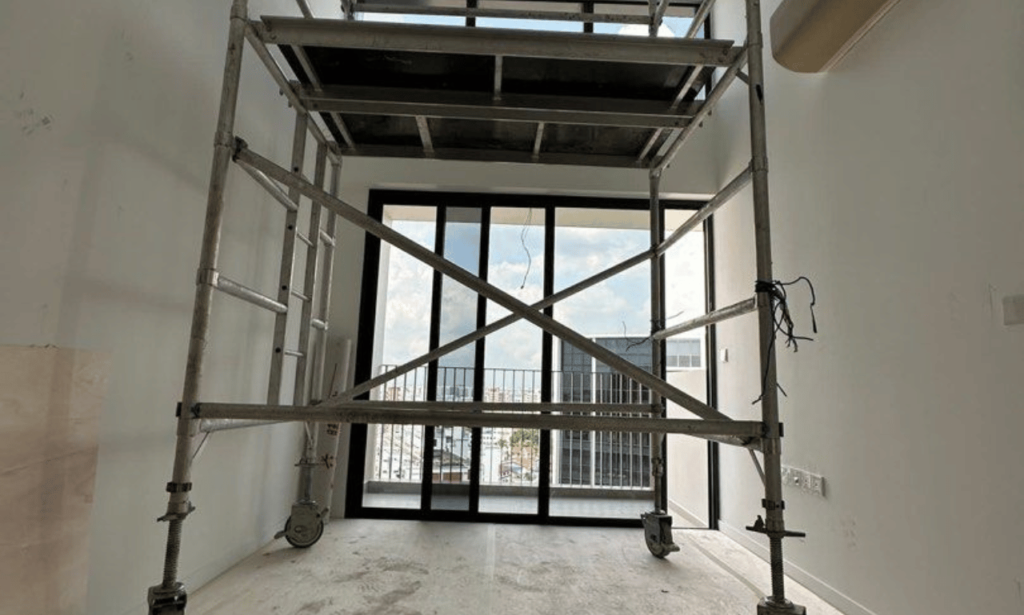
When it comes to working with mobile scaffolds, safety should be the top priority. By following proper procedures and utilizing the right scaffolding equipment, workers can significantly minimize the risk of accidents and ensure their well-being. Here, we’ll explore essential practices to uphold safety standards and promote a secure work environment.
Regular Inspections
Inspections are a crucial aspect of ensuring the safety of mobile scaffolds. Regular checks help identify any potential issues or damages that could compromise the stability of the scaffold system. Inspect the scaffold before each use, paying close attention to structural integrity, guardrails, and bracing. Immediately address any identified problems to maintain a safe working environment.
Proper Assembly and Disassembly
Correct assembly and disassembly of mobile scaffolds are imperative to prevent accidents. Follow the manufacturer’s instructions meticulously, ensuring all components fit securely and are properly tightened. Avoid taking shortcuts or improvising during this process, as it could compromise the integrity and stability of the scaffold system.
Utilize Appropriate Scaffolding Equipment
The use of suitable scaffolding equipment plays a vital role in ensuring worker safety. Always choose equipment that is specifically designed for the type of mobile scaffold system being used. This includes components such as platforms, guardrails, and braces. Using the right equipment enhances stability, provides adequate fall protection, and minimizes the risk of accidents.
By adhering to these safety protocols, workers can enjoy a secure working environment when using mobile scaffolds. Let’s now take a look at a table summarizing the key safety considerations for mobile scaffolds:
| Key Safety Considerations |
|---|
| Regular inspections |
| Proper assembly and disassembly |
| Utilize appropriate scaffolding equipment |
Common Applications of Mobile Scaffold Systems
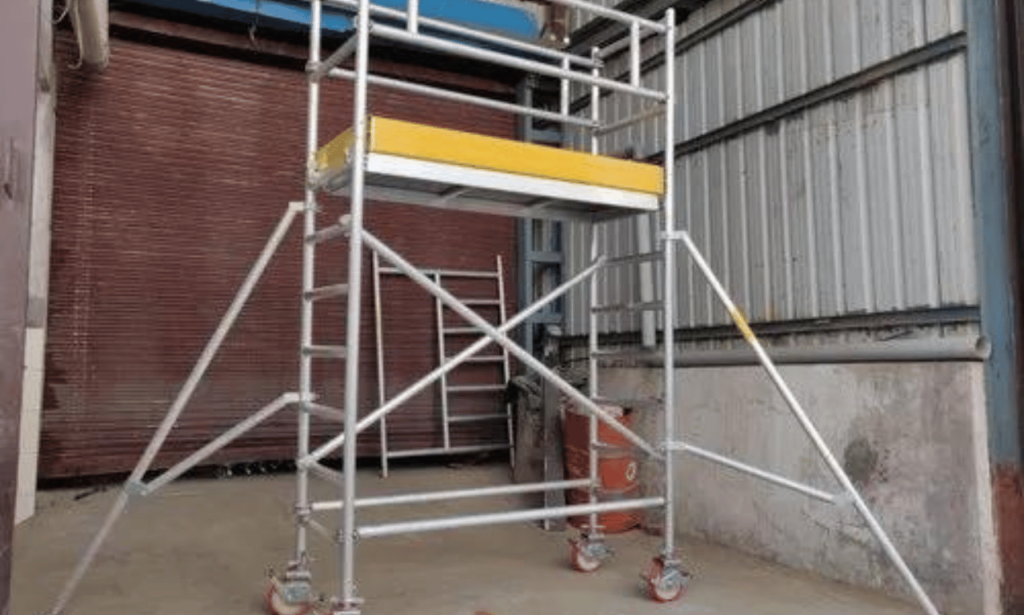
Mobile scaffolds are versatile and widely used in various industries to provide safe and efficient access for workers. Let’s explore some of the common applications where mobile scaffold systems play a crucial role.
1. Construction
In the construction industry, mobile scaffolds are indispensable for tasks such as building maintenance, renovation projects, and elevated access. They provide a stable platform for workers to perform tasks at different heights with ease. Whether it’s installing windows, painting walls, or conducting electrical work, mobile scaffold systems ensure worker safety and facilitate efficient completion of construction projects.
2. Maintenance and Repair
Mobile scaffold systems are also widely used in maintenance and repair activities across various industries. Whether it’s repairing equipment, conducting inspections, or performing routine maintenance tasks, mobile scaffolds provide a secure and easily accessible elevated platform. From mechanical workshops to manufacturing plants, these scaffold systems enable technicians to work efficiently and minimize downtime.
3. Painting
Painting projects often involve working at different heights and reaching challenging areas. Mobile scaffold systems provide a stable and adjustable platform for painters to move around safely and access all surfaces. These scaffolds are particularly useful for painting large-scale structures such as buildings, bridges, and industrial tanks.
4. Industrial Activities
In industrial settings, mobile scaffold systems are used for a wide range of activities. From equipment installations to assembly lines, these scaffolds ensure easy access to various workstations. They are essential in industries such as manufacturing, oil and gas, and automotive, where workers often need to reach elevated areas for production and maintenance tasks.
5. Event Setup
Mobile scaffold systems are also utilized in event planning and setup. Whether it’s constructing stages, setting up lighting fixtures, or arranging audiovisual equipment, these scaffold systems provide a safe and stable platform for event organizers and technicians. They allow for efficient installation and ensure the smooth execution of events.
6. Film and Entertainment Industry
The film and entertainment industry extensively uses mobile scaffolds for setting up sets, constructing temporary structures, and facilitating lighting and sound equipment installation. These scaffold systems offer the flexibility and adaptability required in demanding filming environments, ensuring the safety of crew members and enabling efficient production processes.
Mobile scaffold systems find application in a wide range of industries, providing invaluable support for workers to carry out their tasks safely and efficiently. The versatility and adaptability of these scaffold systems make them an indispensable tool in various work environments.
Understanding the Advancements in Mobile Scaffold Technology
In the world of industrial scaffolding, technology plays a significant role in improving safety, efficiency, and convenience. Advancements in mobile scaffold technology have revolutionized the way workers access elevated work areas, providing them with enhanced functionality and ease of use. Let’s explore some of the key advancements in this field.
1. Innovative Materials
One notable advancement in mobile scaffold technology is the use of innovative materials, such as lightweight alloys. These materials offer a perfect balance of strength and weight, making mobile scaffolds easier to transport, assemble, and dismantle. By utilizing lightweight alloys, workers can now set up scaffolding systems more efficiently, reducing the time and effort required for the task.
2. Integration of Smart Features
Another exciting development in mobile scaffold technology is the integration of smart features. These features leverage automation and digitalization to enhance functionality and improve worker safety. For example, some mobile scaffold systems now come equipped with sensors that monitor the stability and weight capacity of the scaffold. These sensors provide real-time feedback, alerting users if any safety parameters are compromised. Additionally, smart features can assist in tracking scaffold usage, scheduling maintenance, and even optimizing workflow.
Not only do these smart features enhance safety, but they also contribute to productivity and cost-effectiveness. By using advanced technology, mobile scaffold systems can efficiently adapt to the specific needs of different job sites, ensuring optimal functionality and worker comfort.
3. Improved Safety Standards
Advancements in mobile scaffold technology have also led to improved safety standards. Manufacturers are continuously investing in research and development to develop scaffold systems that adhere to the highest safety regulations. These advancements include reinforced structural design, improved locking mechanisms, and enhanced stability measures. Such safety-focused advancements in mobile scaffold technology contribute to reducing accidents and creating a safer work environment for industrial workers.
Overall, the advancements in mobile scaffold technology have significantly improved the safety and convenience of scaffold systems in industrial settings. The use of innovative materials, integration of smart features, and adherence to enhanced safety standards have made mobile scaffold systems more reliable, efficient, and user-friendly.
| Advancement | Benefits |
|---|---|
| Innovative Materials | – Lightweight and easy to transport – Efficient setup and dismantling – Durability without compromising strength |
| Integration of Smart Features | – Real-time safety monitoring – Workflow optimization – Maintenance scheduling and tracking |
| Improved Safety Standards | – Reinforced structural design – Enhanced stability and locking mechanisms – Compliance with safety regulations |
Tips for Proper Setup and Use of Mobile Scaffolds
Proper setup and use of mobile scaffolds are crucial for ensuring the safety and efficiency of industrial work environments. By following these tips, you can minimize the risk of accidents and create a secure platform for your workers.
1. Select Appropriate Scaffolding Equipment
When choosing scaffolding equipment, opt for high-quality and reliable options that meet industry standards. Consider the specific needs of your job site, such as the required height, weight capacity, and mobility. Investing in top-notch equipment will enhance safety and durability.
2. Ensure Level Platforms
Before assembling the mobile scaffold, ensure that the platforms are level. Uneven platforms can lead to instability, posing a safety risk for workers. Use a leveling device, such as a spirit level, to accurately determine if the platforms are even.
3. Secure the Scaffold to Prevent Movement
Once the mobile scaffold is set up, it’s crucial to secure it properly to prevent any unwanted movement. Use appropriate anchoring methods, such as tying the scaffold to fixed structures or using counterweights, to keep it stable and sturdy.
4. Practice Safe Climbing Techniques
When ascending or descending the mobile scaffold, always use the designated access points, such as ladders or stairs. Avoid climbing on the guardrails or any other unsafe methods. Encourage workers to maintain three points of contact while climbing, with both feet and one hand or both hands and one foot firmly on the scaffold at all times.
5. Regularly Inspect and Maintain the Scaffold
Perform regular inspections of the mobile scaffold to identify any signs of wear, damage, or structural issues. Pay close attention to the integrity of the platforms, guardrails, and locking mechanisms. Address any concerns promptly and perform necessary maintenance to keep the scaffold in optimal condition.
By following these tips, you can ensure the proper setup and use of mobile scaffolds, promoting a safe and productive work environment. Remember, safety should always be a top priority when working with scaffolding equipment.
Conclusion
Mobile scaffold solutions are an essential component in ensuring safe work access on industrial job sites. By selecting the right scaffold system, adhering to safety protocols, and considering advancements in mobile scaffold technology, workers can greatly enhance their safety and productivity.
Choosing the appropriate scaffold system is crucial to cater to specific job site requirements. Whether it’s portable scaffolding, adjustable scaffolding, rolling scaffolds, or aluminum scaffolds, each type offers unique features and benefits. Additionally, regular inspections, proper assembly and disassembly procedures, and the use of suitable scaffolding equipment are vital in maintaining safety standards.
Mobile scaffolds not only play a crucial role in worker safety but also improve efficiency in various industrial applications. From construction and maintenance to painting and other industrial activities, these versatile systems provide workers with the flexibility to access different areas of a project quickly.
Innovations in mobile scaffold technology, such as lightweight alloys and smart features, have further enhanced the safety and convenience of these systems. By embracing these advancements, companies can stay at the forefront of industrial scaffolding, ensuring the well-being of their workers and optimizing productivity.
FAQ
What is a mobile scaffold?
A mobile scaffold is a type of scaffolding that is designed to be easily moved and repositioned. It typically consists of a platform supported by a set of wheels or casters, allowing workers to access different areas of a job site quickly and efficiently.
Can I rent a mobile scaffold?
Yes, many companies offer scaffold rental services. Renting a mobile scaffold can be a cost-effective solution, especially for short-term projects or when you need access to specific areas temporarily.
Are portable scaffolding systems the same as mobile scaffolds?
While the terms are often used interchangeably, portable scaffolding systems are a type of mobile scaffold. They are designed to be lightweight, compact, and easy to transport, making them ideal for small-scale projects or locations with limited space.
What is adjustable scaffolding?
Adjustable scaffolding refers to scaffolding systems that can be easily adjusted in height to accommodate different work requirements. These systems typically include telescopic legs or adjustable frames, providing flexibility and adaptability on job sites.
What are rolling scaffolds?
Rolling scaffolds, also known as rolling towers or rolling towers, are mobile scaffolds equipped with wheels or casters. They allow workers to move the scaffold easily without disassembling it, providing convenient access to various work areas.
What are the advantages of using aluminum scaffolds?
Aluminum scaffolds offer several advantages over traditional steel scaffolds. They are lightweight, corrosion-resistant, and easy to assemble, making them ideal for outdoor use or projects that require frequent repositioning.
Why is using appropriate scaffolding equipment important in industrial settings?
Using proper scaffolding equipment ensures the safety and stability of the scaffold system. It helps prevent accidents, ensures worker comfort and efficiency, and meets industry safety standards. It’s crucial to choose equipment that is designed specifically for scaffolding use and regularly inspect and maintain it.

